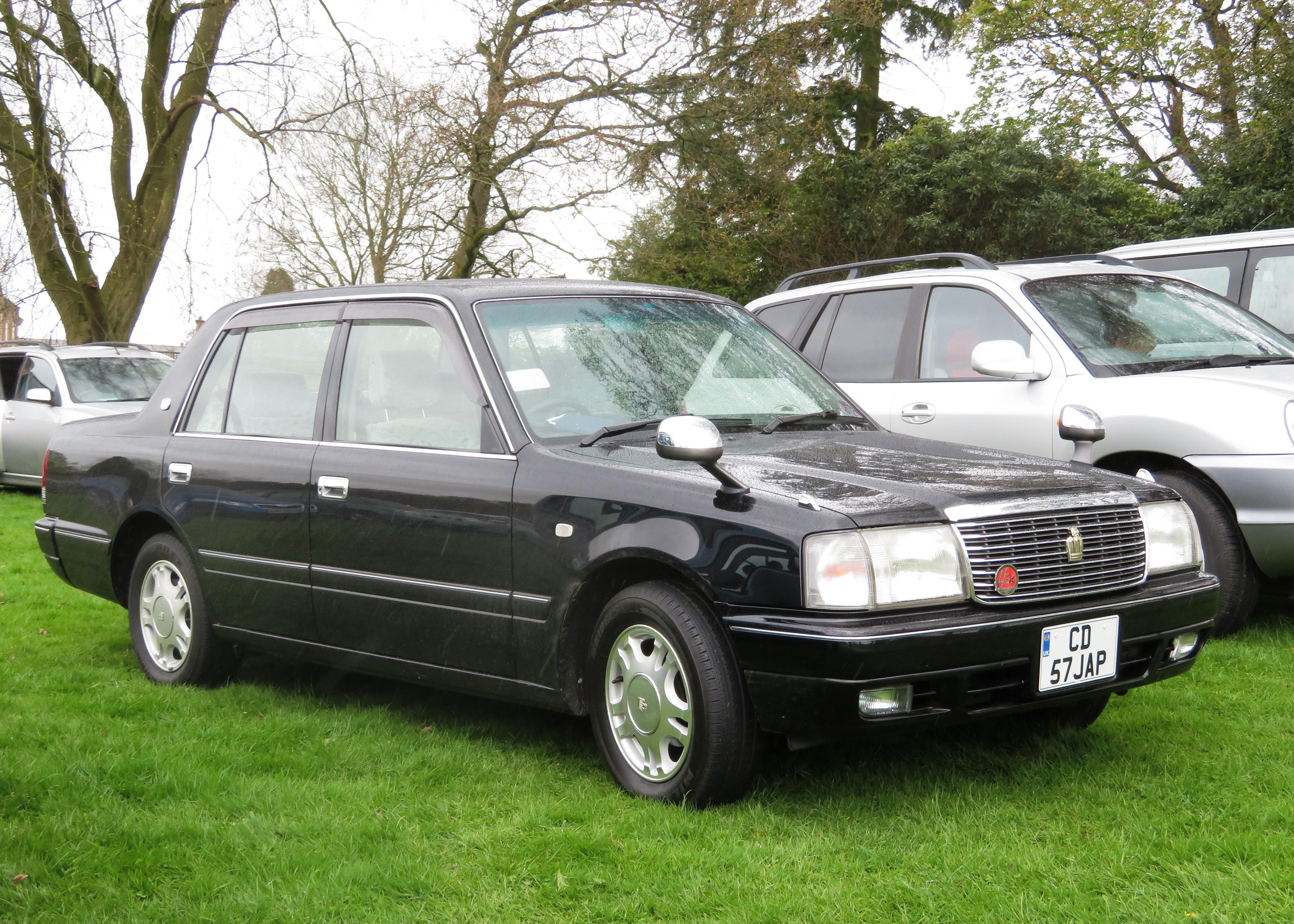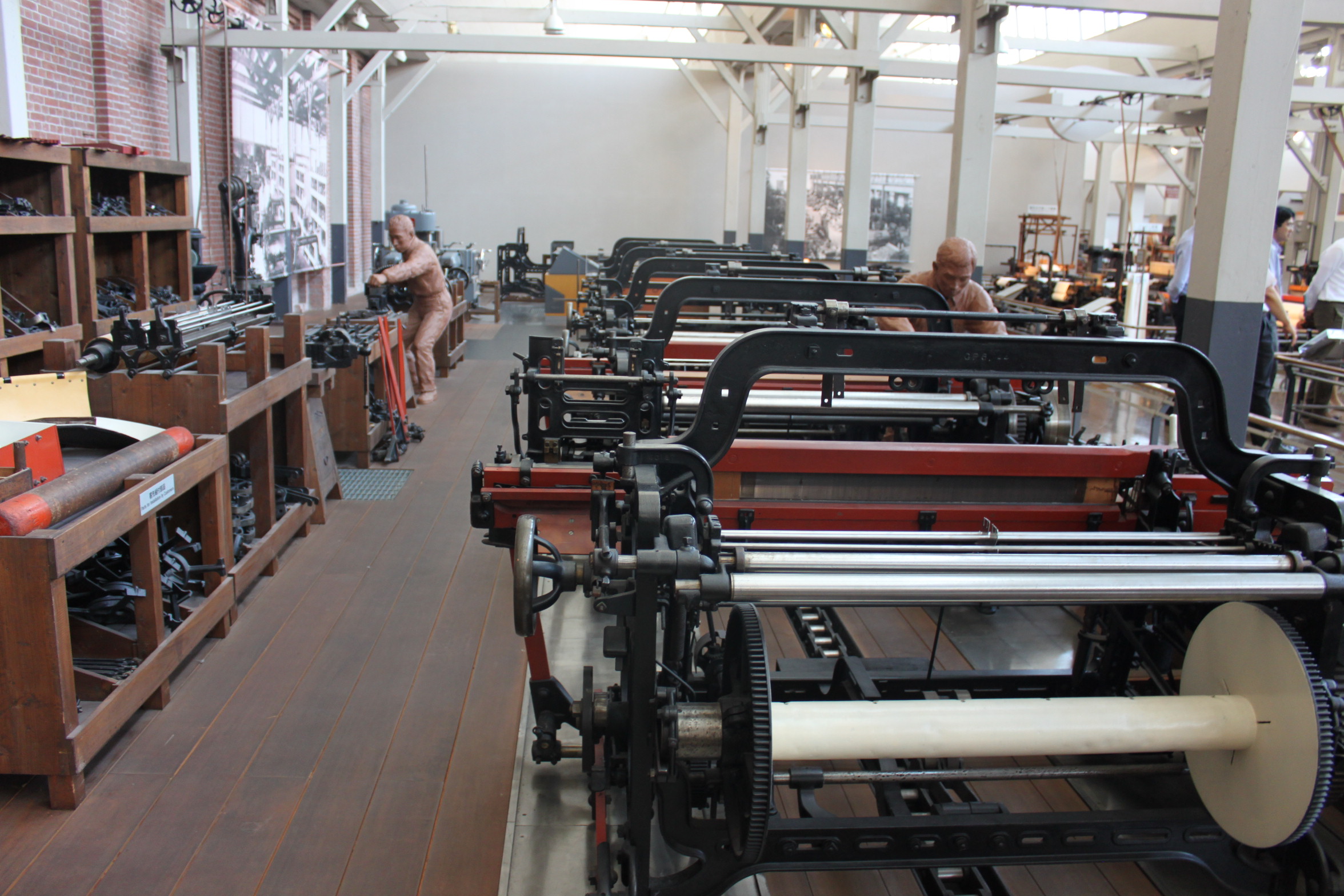|
Toyota Comfort
The and the long-wheelbase Toyota Crown Comfort are a line of mid-size sedans produced by Toyota between 1995 and 2018. A platform derivative of the Toyota Mark II (X80), the Comfort was aimed at fleet buyers with a primary focus on taxicab operators. A third model was released in 2001 as the 11th generation Crown Sedan (the first Crown Sedan not based on the normal Crown executive car) for the Japanese market only. The Crown Sedan was also aimed at fleet buyers, as a high end taxi or for corporate use. Its main competitors were the Nissan Crew (discontinued in June 2009) and the Nissan Cedric Y31 (discontinued in 2015). Production of the Comfort ceased in January 2018, after more than 22 years in production, and it was subsequently replaced by the Toyota JPN Taxi which was launched at the 45th Tokyo Motor Show in October 2017. Description The Comfort and Crown Comfort were released on 19 December 1995 as replacements for the base fleet versions of the Mark II and t ... [...More Info...] [...Related Items...] OR: [Wikipedia] [Google] [Baidu] |
Toyota
is a Japanese Multinational corporation, multinational Automotive industry, automotive manufacturer headquartered in Toyota City, Aichi, Japan. It was founded by Kiichiro Toyoda and incorporated on August 28, 1937. Toyota is the List of manufacturers by motor vehicle production, largest automobile manufacturer in the world, producing about 10 million vehicles per year. The company was founded as a spinoff of Toyota Industries, a machine maker started by Sakichi Toyoda, Kiichiro's father. Both companies are now part of the Toyota Group, one of the largest conglomerates in the world. While still a department of Toyota Industries, the company developed its first product, the Toyota Type A engine, Type A engine, in 1934 and its first passenger car in 1936, the Toyota AA. After World War II, Toyota benefited from Japan's alliance with the United States to learn from American automakers and other companies, which gave rise to The Toyota Way (a management philosophy) and the Toyota ... [...More Info...] [...Related Items...] OR: [Wikipedia] [Google] [Baidu] |
Toyota Y Engine
The Toyota Y engine is a series of overhead valve straight-four petrol engines manufactured by Toyota from 1982 through 1996. The Y engine has mostly been used in commercial and off-road vehicles. The valve arrangement from the Toyota K engine is interchangeable with this engine. Translated from Japanese Wiki :ja:トヨタ・Y型エンジン 1Y There is also the 1Y-J, with the "J" suffix meaning that the engine is built to meet emission standards for light commercial vehicles. *OHV, eight valves *Displacement: *Bore × stroke: *Reference output: , (gross figures, apply to both 1Y and 1Y-J) Applications: * Toyota HiAce truck * Toyota LiteAce (YM20, first generation) * Toyota ToyoAce * Toyota TownAce (YR10) 2Y The 2Y engine is an OHV, eight valve construction just like the 1Y. It shares that engine's bore, but stroke is increased to for a displacement of . There are also 2Y-J and 2Y-U engines with differing emissions control equipment. *OHV, eight valves *Displaceme ... [...More Info...] [...Related Items...] OR: [Wikipedia] [Google] [Baidu] |
Toyota Crown (S130)
The is an automobile which has been produced by Toyota in Japan since 1955. It is primarily a line of mid-size luxury cars that is marketed as an upmarket offering in the Toyota lineup. In North America, the first through fourth generations were offered from 1958 through 1972, being replaced by the Corona Mark II. The Crown nameplate returned to the North American market in 2022, when the sixteenth-generation model was released. The Crown has also been partially succeeded in export markets by its closely related sibling, the Lexus GS, which since its debut in 1991 as the Toyota Aristo has always shared the Crown's platform and powertrain options. Later models of the GS and Crown have taken on a very strong aesthetic kinship through shared design cues. In 2022, Toyota unveiled four different Crown models to replace the fifteenth-generation model. The first model that is available is the Crossover-type Crown. The remaining three models: Sedan, Sport, and Estate, were releas ... [...More Info...] [...Related Items...] OR: [Wikipedia] [Google] [Baidu] |
Mild Hybrid
Mild hybrids (MHEV) (also known as smart hybrids, power-assist hybrids, battery-assisted hybrid vehicles or BAHVs) are generally cars with an internal combustion engine (ICE) equipped with a minimally extended battery and an auxiliary electric combined motor and generator in a parallel hybrid configuration that is only enough for an electric-only mode of propulsion at slow speed and allows the engine to be stopped whenever the car is coasting, braking, or stopped, and then restarted once power is required again. Mild hybrids may employ regenerative braking and some level of power assist to the internal combustion engine. Overview The mild hybrid's electric motor provides greater efficiency through the use of a single device that is essentially an integrated starter/alternator sometimes known as a generator-motor unit. A typical mild-hybrid setup uses a belt-powered generator-motor unit driven off the engine to supply power to a small battery. The generator is also powered throug ... [...More Info...] [...Related Items...] OR: [Wikipedia] [Google] [Baidu] |
Toyota W Transmission
Toyota Motor Corporation's W family is a family of Automobile layout#Rear-wheel-drive layouts, RWD/4WD transmissions built by Aisin. Physically, these transmissions have much in common (like the bell housing-to-body bolt pattern) with other Aisin-built transmissions, like the Jeep AX-5 and the Toyota Toyota G transmission, G-series. The W55, W56, W57, W58, and W59 are externally and internally very similar aside from the gear ratios. W40 4-speed transmission offered in base model vehicles in the 1970s. Often referred to as a Celica or Corona steel case 4-speed. The housing is steel as opposed to aluminium in later W series boxes. Ratios: * First Gear: 3.287:1 * Second Gear: 2.043:1 * Third Gear: 1.394:1 * Fourth Gear: 1.00:1 * Reverse: 4.091:1 Applications (calendar years): * 1971–1976 Toyota Celica (A20) * 1970s Toyota Corona up to the *T132 chassis W42 4-speed transmission. Ratios: * First Gear: 3.579:1 * Second Gear: 2.081:1 * Third Gear: 1.397:1 * Fourth Gear: 1.000:1 * ... [...More Info...] [...Related Items...] OR: [Wikipedia] [Google] [Baidu] |
Manual Transmission
A manual transmission (MT), also known as manual gearbox, standard transmission (in Canadian English, Canada, British English, the United Kingdom and American English, the United States), or stick shift (in the United States), is a multi-speed motor vehicle Transmission (mechanical device), transmission system where gear changes require the driver to manually select the gears by operating a gear stick and clutch (which is usually a foot pedal for cars or a hand lever for motorcycles). Early automobiles used ''sliding-mesh'' manual transmissions with up to three forward gear ratios. Since the 1950s, ''constant-mesh'' manual transmissions have become increasingly commonplace, and the number of forward ratios has increased to 5-speed and 6-speed manual transmissions for current vehicles. The alternative to a manual transmission is an automatic transmission. Common types of automatic transmissions are the Automatic transmission#Hydraulic automatic transmissions, hydraulic automatic ... [...More Info...] [...Related Items...] OR: [Wikipedia] [Google] [Baidu] |
Toyota N Transmission
is a Japanese multinational automotive manufacturer headquartered in Toyota City, Aichi, Japan. It was founded by Kiichiro Toyoda and incorporated on August 28, 1937. Toyota is the largest automobile manufacturer in the world, producing about 10 million vehicles per year. The company was founded as a spinoff of Toyota Industries, a machine maker started by Sakichi Toyoda, Kiichiro's father. Both companies are now part of the Toyota Group, one of the largest conglomerates in the world. While still a department of Toyota Industries, the company developed its first product, the Type A engine, in 1934 and its first passenger car in 1936, the Toyota AA. After World War II, Toyota benefited from Japan's alliance with the United States to learn from American automakers and other companies, which gave rise to The Toyota Way (a management philosophy) and the Toyota Production System (a lean manufacturing practice) that transformed the small company into a leader in the industry an ... [...More Info...] [...Related Items...] OR: [Wikipedia] [Google] [Baidu] |
Automatic Transmission
An automatic transmission (AT) or automatic gearbox is a multi-speed transmission (mechanics), transmission used in motor vehicles that does not require any input from the driver to change forward gears under normal driving conditions. The 1904 Sturtevant "horseless carriage gearbox" is often considered to be the first true automatic transmission. The first mass-produced automatic transmission is the General Motors ''Hydramatic'' two-speed hydraulic automatic, which was introduced in 1939. Automatic transmissions are especially prevalent in vehicular drivetrains, particularly those subject to intense mechanical acceleration and frequent idle/transient operating conditions; commonly commercial/passenger/utility vehicles, such as buses and waste collection vehicles. Prevalence Vehicles with internal combustion engines, unlike electric vehicles, require the engine to operate in a narrow range of rates of rotation, requiring a gearbox, operated manually or automatically, to drive t ... [...More Info...] [...Related Items...] OR: [Wikipedia] [Google] [Baidu] |
Toyota A Transmission
Toyota Motor Corporation's A family is a family of automatic Front-wheel drive, FWD/Automobile layout#Rear-wheel-drive layouts, RWD/4WD/All-wheel drive, AWD transmissions built by Aisin-Warner. They share much in common with Volvo's AW7* and Aisin-Warner's 03-71* transmissions, which are found in Suzukis, Mitsubishis, and other Asian vehicles. The codes are divided into three sections * The letter A = Aisin-Warner Automatic. * Two or three digits. ** Older transmissions have two digits. *** The first digit represents the generation (''not'' the number of gears, see A10 vs A20 and A30 vs A40 vs A40D). *** The last digit represents the particular application. ** Newer transmission have three digits. *** The first digit represents the generation. Note: the sequence is 1,2,...,9,A,B with A and B being treated as digits. *** The second digit represents the number of gears. *** The last digit represents the particular application. * Letters representing particular features: ** D = S ... [...More Info...] [...Related Items...] OR: [Wikipedia] [Google] [Baidu] |
BAS Hybrid
BAS (belted alternator starter) is a category of automotive parallel hybrid technology that uses an electric motor to contribute power to the internal combustion engine's crankshaft via a serpentine belt. By mounting this motor generator unit in the conventional location traditionally used for the standard automotive alternator (automotive), alternator, it permits a low-cost method of adding mild hybrid capabilities such as start-stop, power assist, and mild levels of regenerative braking. BAS systems differ from other mild hybrid systems as they are not run off the vehicle's crankshaft. Toyota In June 2001, Toyota introduced a BAS hybrid system under the Toyota Hybrid System-Mild (THS-M) brand name. It operates similarly to other mild hybrids with a start-stop system, in that it shuts down the engine as the vehicle comes to a stop and instantly restarts it when the brake pedal is released. THS-M is capable of modest power assist during launch acceleration and similarly modest le ... [...More Info...] [...Related Items...] OR: [Wikipedia] [Google] [Baidu] |
Turbodiesel
The term turbo-diesel, also written as turbodiesel and turbo diesel, refers to any diesel engine equipped with a turbocharger. As with other engine types, turbocharging a diesel engine can significantly increase its efficiency and power output, especially when used in combination with an intercooler. Turbocharging of diesel engines began in the 1920s with large marine and stationary engines. Trucks became available with turbo-diesel engines in the mid-1950s, followed by passenger cars in the late 1970s. Since the 1990s, the compression ratio of turbo-diesel engines has been dropping. Principle Diesel engines are typically well suited to turbocharging due to two factors: * A "lean" air–fuel ratio, caused when the turbocharger supplies excess air into the engine, is not a problem for diesel engines, because the torque control is dependent on the mass of fuel that is injected into the combustion chamber (i.e. air-fuel ratio), rather than the quantity of the air-fuel mixture. * ... [...More Info...] [...Related Items...] OR: [Wikipedia] [Google] [Baidu] |





